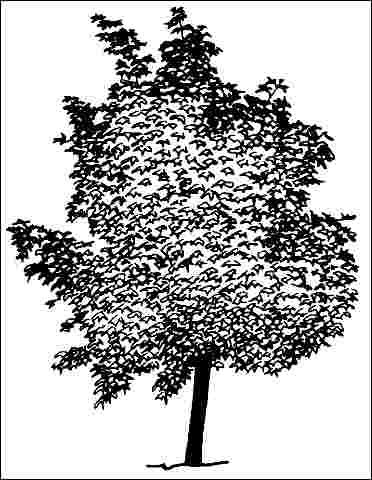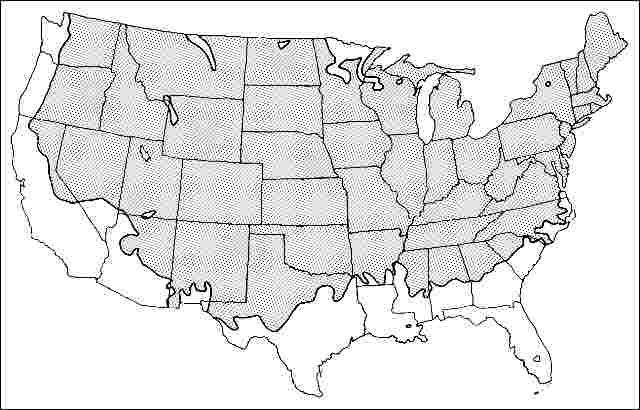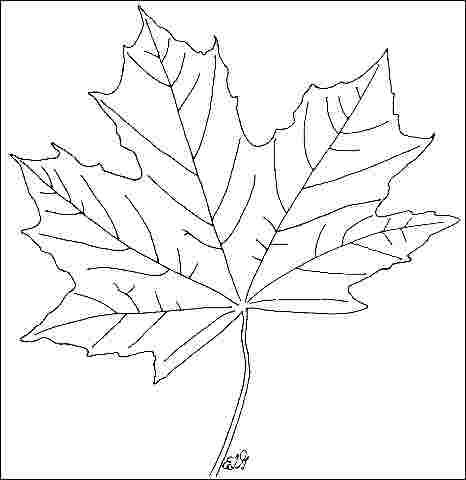Introduction
'Crimson King' Norway maple grows to a height of 35 to 45 feet spreading about 25 to 30 feet and is quite popular for its purple-green foliage throughout the summer. Leaves turn brown, dark maroon or bronze in the fall before dropping. The oval to rounded crown fills with maroon-yellow flowers in the spring. 'Crimson King' Norway maple's dense shade and shallow root system compete with lawn grasses, and the shallow roots can make mowing under the tree difficult.

General Information
Scientific name: Acer platanoides
Pronunciation: AY-ser plat-uh-NOY-deez
Common name(s): 'Crimson King' Norway maple
Family: Aceraceae
USDA hardiness zones: 3B through 7B (Fig. 2)
Origin: not native to North America
Invasive potential: invasive non-native
Uses: specimen; screen; shade; parking lot island 100-200 sq. ft.; parking lot island > 200 sq. ft.; sidewalk cutout (tree pit); tree lawn 4-6 feet wide; tree lawn > 6 ft. wide; highway median; street without sidewalk; Bonsai
Availability: not native to North America

Description
Height: 35 to 45 feet
Spread: 25 to 40 feet
Crown uniformity: symmetrical
Crown shape: oval
Crown density: dense
Growth rate: moderate
Texture: coarse
Foliage
Leaf arrangement: opposite/subopposite (Fig. 3)
Leaf type: simple
Leaf margin: lobed, dentate, incised
Leaf shape: star-shaped
Leaf venation: palmate
Leaf type and persistence: deciduous
Leaf blade length: 4 to 8 inches
Leaf color: purple/red
Fall color: yellow
Fall characteristic: showy

Flower
Flower color: green
Flower characteristics: not showy
Fruit
Fruit shape: elongated
Fruit length: 1 to 3 inches
Fruit covering: dry or hard
Fruit color: brown, green
Fruit characteristics: attracts birds; showy; fruit/leaves not a litter problem
Trunk and Branches
Trunk/bark/branches: branches don't droop; not showy; typically one trunk; thorns
Pruning requirement: needed for strong structure
Breakage: resistant
Current year twig color: brown
Current year twig thickness: thick
Wood specific gravity: unknown
Culture
Light requirement: full sun, partial sun or partial shade
Soil tolerances: sand; loam; clay; acidic; alkaline; well-drained; occasionally wet
Drought tolerance: moderate
Aerosol salt tolerance: moderate
Other
Roots: can form large surface roots
Winter interest: no
Outstanding tree: yes
Ozone sensitivity: unknown
Verticillium wilt susceptibility: susceptible
Pest resistance: resistant to pests/diseases
Use and Management
It is well adapted to street tree use but due to its bold leaf color may produce an overpowering, negative effect if planted along an entire street. It is probably best used as a shade tree or specimen or in a group tree planting to add accent to an area. Many types of birds are known to use the seeds as a food source, so it might be best located away from an area with park benches.
The tree is easily transplanted, grows quickly, is adapted to a wide variety of soils (including slightly alkaline), and can tolerate shade, drought, and coastal conditions. It can naturalize if located close to open areas. Sensitive to poorly drained soil, the tree responds well when planted in a mound with about one-third of the root ball above the existing soil grade. 'Crimson King' is reportedly more difficult to transplant than the species but is considered an urban tough tree due to its adaptability. Trunks can crack on the southern and western sides during the winter. Roots can heave sidewalks so locate at least four to six feet away.
See the species for a list of other cultivars of the species. 'Crimson King' may be more susceptible to pests than the species.
Pests
Aphids infest maples, usually Norway maple, and may be numerous at times. High populations can cause leaf drop. Another sign of heavy aphid infestation is honey dew on lower leaves and objects beneath the tree. Aphids are controlled by spraying or they may be left alone. If not sprayed, predatory insects will bring the aphid population under control.
Scales are an occasional problem on maples. Perhaps the most common is cottony maple scale. The insect forms a cottony mass on the lower sides of branches. Scales are controlled with horticultural oil sprays. Scales may also be controlled with well-timed sprays to kill the crawlers.
If borers become a problem it is an indication the tree is not growing well. Controlling borers involves keeping trees healthy. Chemical controls of existing infestations are more difficult. Proper control involves identification of the borer infesting the tree then applying insecticides at the proper time.
Diseases
Verticillium wilt symptoms are wilting and death of branches. Infected sapwood will be stained a dark or olive green, but staining can't always be found. If staining can not be found, do not assume the problem is not verticillium wilt. Severely infected trees probably can't be saved. Lightly infected trees showing only a few wilted branches may be pulled through. Fertilize and prune lightly infected trees. Fertilize with a high nitrogen fertilizer. This treatment will not cure the problem but may allow the tree to outgrow the infection. Girdling roots will cause symptoms which mimic verticillium wilt.
Girdling roots grow around the base of the trunk rather than growing away from it. As both root and trunk increase in size, the root chokes the trunk. Girdling roots are detected by examining the base of the trunk. The lack of trunk flare at ground level is a symptom. The portion of the trunk above a girdling root does not grow as rapidly as the rest so may be slightly depressed. The offending root may be on the surface or may be just below the sod. The tree crown shows premature fall coloration and death of parts of the tree in more serious cases. If large portions of the tree have died it may not be worth saving. Girdling roots are functional roots so when removed, a portion of the tree may die. When the girdling root is large the treatment may be as harmful as the problem. After root removal, follow-up treatment includes fertilization, and watering during dry weather.
Leaf scorch occurs during periods of high temperatures accompanied by wind. Trees with diseased or inadequate root systems will also show scorching. When trees do not get enough water they scorch. Scorch symptoms are light brown or tan dead areas along the margins or between leaf veins. The symptoms appear on all parts of the tree or only on the side exposed to sun and wind. Scorching due to dry soil may be overcome by watering. If scorching is due to an inadequate or diseased root system, watering will have no effect.